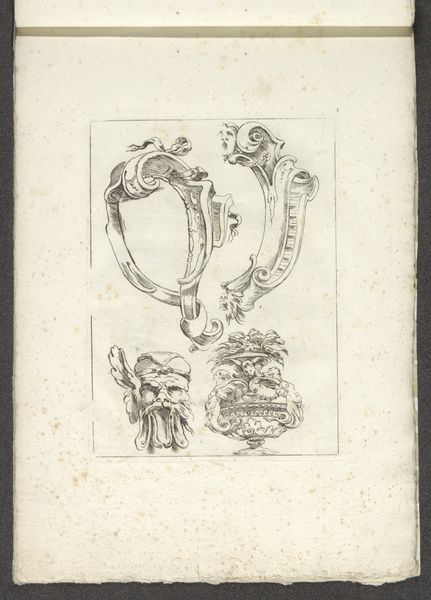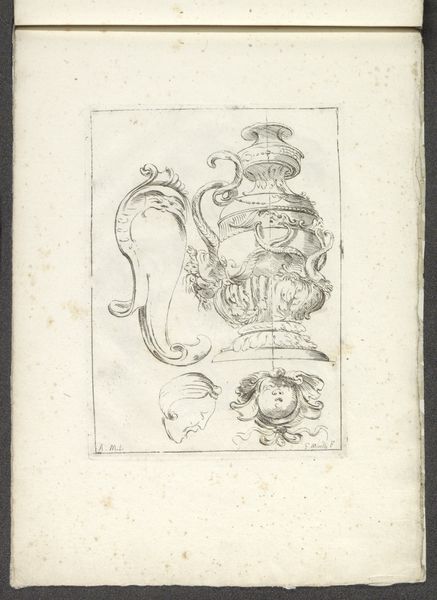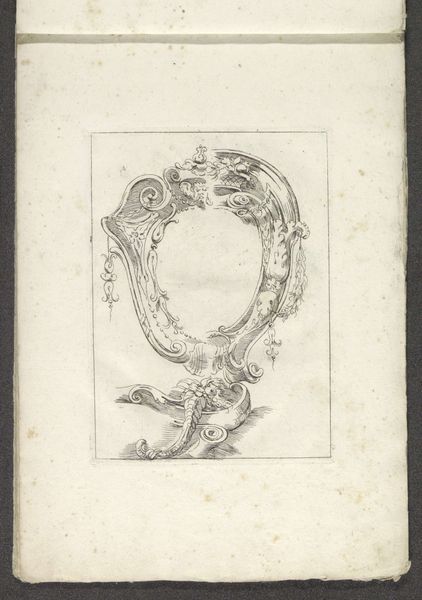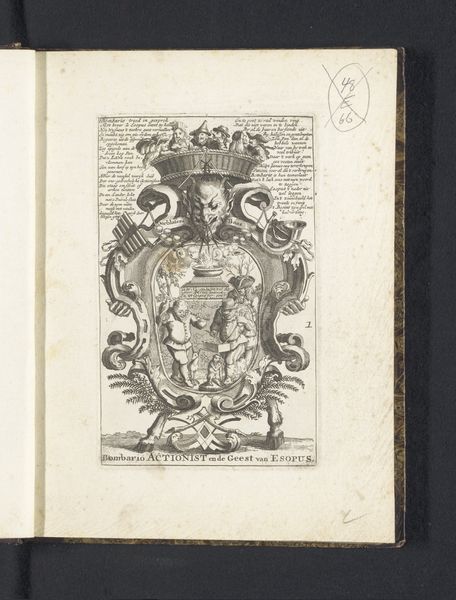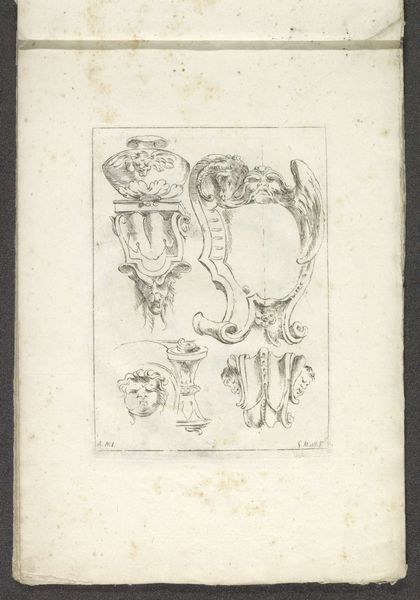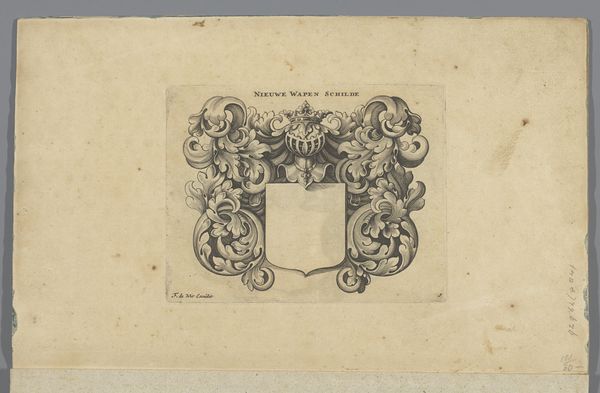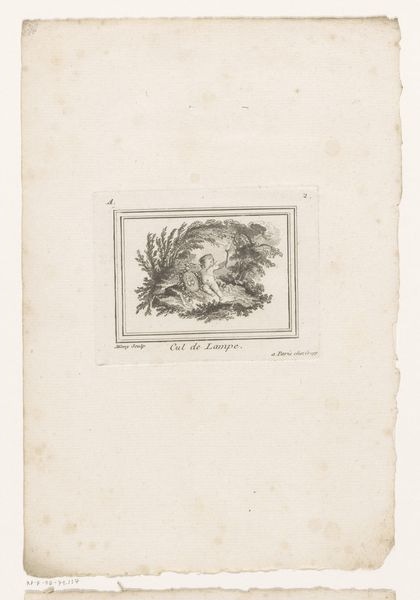
drawing, paper, ink
#
drawing
#
baroque
#
paper
#
ink
Dimensions: height 190 mm, width 139 mm
Copyright: Rijks Museum: Open Domain
Editor: This is "Ornamentkop, twee vazen en een kan" – which translates to "Ornament Head, two vases and a jug," a drawing done in ink on paper sometime between 1644 and 1718 by Giuseppe Maria Mitelli. The collection of objects feel baroque, like something from a royal table setting, but there's a strange, almost whimsical quality to them. I'm curious about your thoughts—what do you see in this work? Curator: What immediately strikes me is the symbolic language Mitelli employs. Note the recurring motifs: the grotesque face, the eagle, the swirling foliage. These aren't merely decorative. The grotesque, for example, often functioned as an apotropaic symbol – meant to ward off evil. The eagle, a symbol of power and dominion, elevates the mundane object to the realm of the heroic. Editor: So these aren't just designs for fancy objects; they’re communicating something deeper? Curator: Precisely. The visual language speaks to a cultural memory. The symbols Mitelli chooses reflect a worldview, a negotiation with power, protection, and even mortality. Think about where these objects might have been displayed – likely in spaces designed to impress. The imagery reinforces that purpose. The monkey on top of the jug offers an interesting element. How does that small detail change the image for you? Editor: I hadn't even noticed it! That definitely complicates things. It adds a playful, almost satirical element to what initially seemed like a purely serious display of power and wealth. It brings it back down to earth, in a way. Curator: It reminds us that even amidst grandeur, human nature, with all its follies and delights, persists. These weren't merely beautiful objects; they were loaded with cultural meaning. Editor: I hadn’t considered how the symbols could be these miniature stories. It really makes me look at art differently. Curator: Visual language is always a conversation – an exchange of ideas across time and culture. Now you can see the image continuing to live through us, carrying its weight in symbolism across the centuries!
Comments
No comments
Be the first to comment and join the conversation on the ultimate creative platform.


